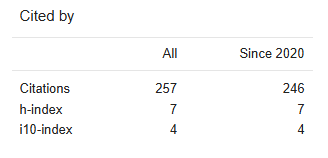Paper Details


Call For Papers
Volume 06, Issue 12
Frequency: 12 Issue per year
Paper Submission: Throughout the Month
Acceptance Notification: Within 2 days
Areas Covered: Multidisciplinary
Accepted Language: Multiple Languages
Journal Type: Online (e-Journal)
Announcement

Publish books with ISBN Number
- Edited Book
- Text Book
- Ph.D Thesis
- Conference Proceedings
ISSN Number:
2582-8568
Journal DOI No:
03.2021-11278686
Title:
Cross-Border Infiltration in India: Patterns and Purpose Analysis
Authors:
Cite this Article:
,
Cross-Border Infiltration in India: Patterns and Purpose Analysis, International Research Journal of Humanities and Interdisciplinary Studies (www.irjhis.com), ISSN : 2582-8568, Volume: 6, Issue: 8, Year: August 2025, Page No : 65-92,
Available at : http://irjhis.com/paper/IRJHIS2508008.pdf
Abstract:
This paper critically investigates the historical patterns and strategic purposes of cross-border infiltration across volatile international borders, with a particular focus on South Asia. The objective is to provide a comprehensive understanding of how infiltration has evolved as a tactic in state and non-state conflict dynamics and to assess its implications for national security and regional stability. Using a multidisciplinary methodology that combines historical analysis, geostrategic mapping and qualitative case studies, the research examines infiltration incidents from 1947 to the present. Key case studies include the India-Pakistan border (with special reference to Jammu & Kashmir), the Sino-Indian frontier and Southeast Asian insurgency-prone regions. The major findings reveal that infiltration is not a random phenomenon but a calculated maneuver aligned with broader geopolitical objectives. Moreover, the nature of infiltration has transformed in response to advancements in surveillance, fencing technologies and international pressure. The paper concludes that while conventional border security mechanisms have improved, infiltration persists due to asymmetric warfare strategies and the complicity of transnational networks.
Keywords:
cross-border infiltration, hybrid warfare, border security, asymmetric conflict, South Asia, national sovereignty
Publication Details:
Published Paper ID: IRJHIS2508008
Registration ID: 22019
Published In: Volume: 6, Issue: 8, Year: August 2025
Page No: 65-92
ISSN Number: 2582-8568
Download Full Paper: Click Here
Article Preview:





